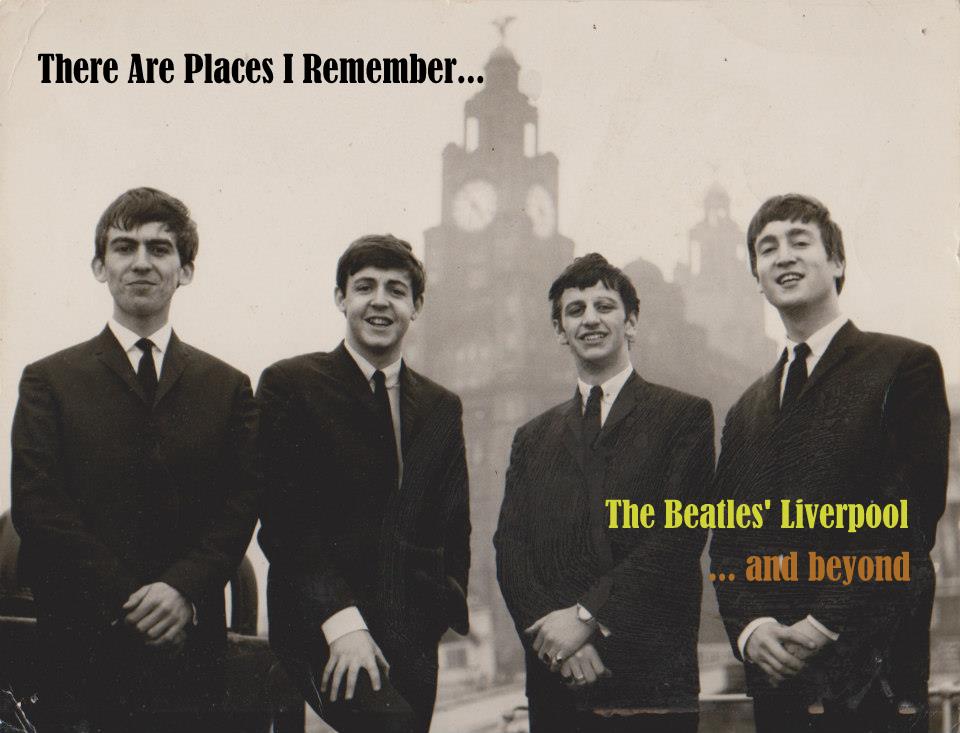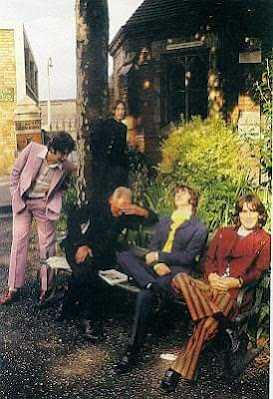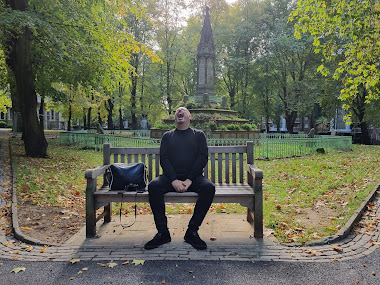93 Silverthorne Road, SW8
A short walk from Lavender Hill is Silverthorne Road. This one is so obscure it doesn't even appear in The Beatles' London. The authors had to draw the line somewhere I guess.
Number 93 was the childhood home of a Beatle!
Jimmie Nicol was elevated from relative obscurity to worldwide fame, and then quickly back again, when he stood in for an ailing Ringo Starr on the opening eight concerts of the Beatles' 1964 world tour.
Paul McCartney later acknowledged: "It wasn't an easy thing for Jimmie to stand in for Ringo, and have all that fame thrust upon him. And the minute his tenure was over, he wasn't famous any more."
Nicol's subsequent lack of commercial success culminated in bankruptcy in 1965. In 1967, after having worked with a number of different bands which included a successful relationship with the Spotnicks, he left the music business to pursue a variety of entrepreneurial ventures. Increasingly, he shied away from media attention, preferring not to discuss his connection to the Beatles, nor seeking financial gain from it.
Jimmie Nicol and John Lennon in 1964
Battersea Power Station, Nine Elms, Battersea
The iconic Battersea A Power Station was built in the 1930s. Work started on Battersea B Power Station, to its east, in the late 1930s but the outbreak of war in 1939 put the construction on hold, and it was not completed until 1955. They were built to a near-identical design, providing the four-chimney structure.
The station is one of the world's largest brick buildings, and notable for its original, lavish Art Deco interior fittings and decor. The building's exterior was designed by Sir Giles Gilbert Scott, the distinguished architect and industrial designer, famous for his designs for the red telephone box and Liverpool's Anglican Cathedral.
The power station was decommissioned between 1975 and 1983 and remained empty until 2014. It was designated as a Grade II listed building in 1980. In 2007 its listed status was upgraded to Grade II*.
"A well known power station"
It appears briefly in the Beatles' film 'Help!' identified as ''a well known power station", as well the films Children Of Men, Nineteen Eighty Four, Richard III, The Dark Knight and others. Perhaps most famously, it appears on the front cover of Pink Floyd's 1977 album Animals, with an inflatable pink pig floating above it. The group held the launch party for the album at the station.
Nearly forty years after the lights were switched off, a regenerated Battersea Power Station, now encompassing shops, bars, restaurants and leisure venues opened its doors to the public on Friday 14 October, 2022. If we'd delayed our London trip by just one week we could have taken a look inside.
It was time to take the tube (Northern Line) to Mornington Crescent.
%20(22).JPG)
Mornington Crescent Station on the edge of Camden is another little gem. It was opened as part of the original route of the Charing Cross, Euston & Hampstead Railway (now the Charing Cross branch of the Northern line) on 22 June 1907. The surface building was designed by the Underground Electric Railways Company of London's (UERL's) architect Leslie Green in the Modern Style (British Art Nouveau style).
%20(24).JPG)
Across the road from the station is
KOKO, previously known as The Music Machine and Camden Palace.
Opening as the Camden Theatre on
Boxing Day, 1900 it became a variety theatre in 1909 renamed the Camden Hippodrome
Theatre. By 1911 films were presented as part of the variety programme, and it
became a Cinema. In 1928 it became part of the Gaumont British cinema circuit.
Between 1945 and 1972 it was used by
the BBC as a radio and recording studio. Among the first weekly series to be
broadcast live from here was The Richard Tauber Programme, from 1945 to 1947.
The Goon Show was recorded at the theatre and the first Monty Python’s Flying
Circus album in 1970.
%20(26).JPG)
After the BBC moved out the building
remained unused for a number of years but was saved from demolition when it was
Grade II listed in late 1972.
Thankfully new trends in music revived
the theatre’s fortunes. Between 1977 and 1982 under the name of The Music
Machine it became a live music venue, popular with punk and new wave artists
and hosted concerts by The Jam, The Clash and the Boomtown Rats. It was the
last venue AC/DC's Bon Scott was seen drinking at before his death in 1980.
In 1982 it was renamed the Camden Palace
and until closure in 2004 it continued to host notable musical events. Madonna
gave her first UK performance here in 1982 and famously Prince performed here
in 1988 on his Lovesexy tour with the Stones’ Ronnie Wood as guest
guitarist. Around this time, it became a mecca for the burgeoning rave music
scene from 1989–92. Early PA performances included both The Prodigy and N-Joi.
Appearances from live bands continued, however, including Blur and Cardiacs.
By 2004 the theatre was rundown and
disused. In 2020 it was bought by a developer who saw its continued potential
as concert venue and following a multi-million pound refurbishment, KOKO
reopened in April 2022. The inaugural concert featured Arcade Fire, marking the
release of their sixth studio album We.
KOKO stands on the corner of Pancras Road, down which we headed to our first major Beatles' location of the day.
Pancras Old Road, NW1
Needing new publicity photos, on Sunday 28 July the Beatles were photographed at seven different locations around London by Don McCullin, Tom Murray, Mal Evans and others, an exercise which has retrospectively become known as the 'Mad Day Out'.
Some of the most memorable images from the day were taken here, in the churchyard of St Pancras Old Church, dedicated to the Roman martyr Saint Pancras and believed by many to be one of the oldest sites of Christian worship in England, perhaps as early as AD314. It has been rebuilt and altered several times since, notably during the Tudor era, the period from which most of the current church dates, and the later Victorian age when it was restored, and extended further. It provides a chaplaincy to the adjacent St Pancras Hospital, which as we will see, provides the backdrop to some of the Beatles' photographs
The church and gardens provided the fifth location of the day for the Beatles' photographic marathon. Moving around the grounds they were photographed in nine different areas which thankfully are little changed 54 years on. We decided to recreate them as best we could, following the order determined in The Beatles' London book.
Location #1 was on top of a grassy knoll to the right of the entrance gates to the churchyard (rather than the gate with steps leading to the church itself).

Steve and I then followed the Beatles' route through the churchyard, stopping first at location #2 which was one of the benches near the Burdett Coutts Memorial. Here we immediately ran into trouble. There were no benches positioned where the Beatles were sitting in 1968. Therefore it was a bit of a guestimate trying to work out which side of the memorial was showing behind the Beatles in the photo. Looking at my photos again for the purposes of writing this blog, it's now clear that the side of the monument visible in the Beatles' photo is the left face of the two sides captured in my photo - I needed to move round further to the left and photograph it head on.
The impressive Burdett Coutts Memorial Sundial monument was erected in 1877 when the northern half of the churchyard was formalised as a public park, clearing most of the older, smaller gravestones. The memorial lists the gravestones that were lost to this, and earlier clearances for the railways (St Pancras station runs across the back of the churchyard).
Location #3 was centred around the ornate drinking fountain. Recreating the 1968 images was great fun. While it was obviously still working in 1968 we had to improvise.

We then moved on to location #4, the grave of Sir John Soane (1753-1837).
Soane was an English architect specialising in the neo-classical style. The son of a bricklayer, he rose to the top of his profession, designing several notable buildings, of which the Bank of England is his best known. He was knighted in 1831. He designed the tomb in which he now lies, alongside his wife and elder son, and you will notice how the design was a direct influence on Sir Giles Gilbert Scott's design for the red telephone box. That's the second mention of Gilbert Scott in this blog for those of you paying attention.

The Beatles were photographed on the lawn surrounding the tomb, probably enjoying the double meaning of the warning sign around which they sat. Looking on-line for a 'then' reference photo to base my 'now' image upon I was amused to find this one of a certain famous Beatles' author which I suspect was taken around the time he needed his own 'now' images for inclusion in a certain guide to the 467 Beatles' sites in London. The entire lawn now has railings around it. Just in case he comes back.
For location #5, the Beatles were next photographed sitting on a bench outside St Pancras Coroner's Court where an old man was already quietly reading his newspaper. With the bench, and the old man, no longer there, this was the trickiest one to recreate and we had to look at a number of photos online to workout which angle of the building was visible in the 1968 shots.
Location #6 produced some of the most memorable images from the entire 'Mad Day Out' session. Moving around the churchyard to the flowerbeds running parallel to the old hospital buildings, the Fabs were snapped peeking out from behind shoulder high, brightly coloured hollyhocks. As we were visiting in October, the hollyhocks, such as remained, were definitely past their prime.
St Pancras hospital was built in 1848 as the infirmary for the St Pancras Union Workhouse, some 120 years before the Beatles' visit. 54 years on the buildings are still in use as a hospital today.
It was back to the monument, for location #7 and more photographs on a bench. Despite how much greener the whole churchyard is now the trees have fully matured, making it difficult to use any of the surrounding buildings as a reference, this shot was easier to frame, helped by the fact that the bench currently in situ has a plaque commemorating the session.
With the location of the bench firmly nailed, it was only left for me to try and recreate John's slightly maniacal expression for the photo. It's not something you want to witness on a Sunday morning, or ever, truth be told. Thankfully the churchyard was deserted although I did notice that Steve kept his distance for a time afterwards.
We swiftly moved on, swiftly, to the front of the church for location #8.
The Beatles posed under the Norman-style arched church doorway, with John taking the lead in most of the shots, clasping his hands as if in prayer, turning his back to the camera, throwing menacing looks, and shaking his fist while the others feigned serious expressions.
According to The Beatles' London, location #9 was an opportunistic moment on the part of Don McCullin, who, on noticing the small crowd gathering behind the railings dividing the church and gardens made the Beatles (and Yoko) mingle among them for the final set of photos.
This produced what might very well be the third image of the Beatles I ever set eyes on - the photo used on the inner gatefold sleeve of my parents' The Beatles 1962-1966 and The Beatles 1967-70 'Red' and 'Blue' compilation albums - my 1970's entry point to the group.

Note that in the 54 years since the 'Mad Day Out', the obelisk that was lying on the floor (behind the railings, bottom right) during the Beatles' session has at some point been restored to its original position. The railings have also been replaced.
See you soon in Part 8 where we visit the setting for perhaps the Beatles best promotional films - Paperback Writer and Rain.
Information taken from The Beatles' London book by Piet Schreuders, Mark Lewisohn and Adam Smith (1994).
My social media:

%20(5)%20edit.jpg)
.jpg)


%20(1)a.jpg)


%20(22).JPG)
%20(24).JPG)






%20(64)%20BEST.jpg)




%20(4).heic)
%20(1).JPG)

%20(11).heic)

%20(26).JPG)









%20(50).jpg)




%20(39).heic)









No comments:
Post a Comment